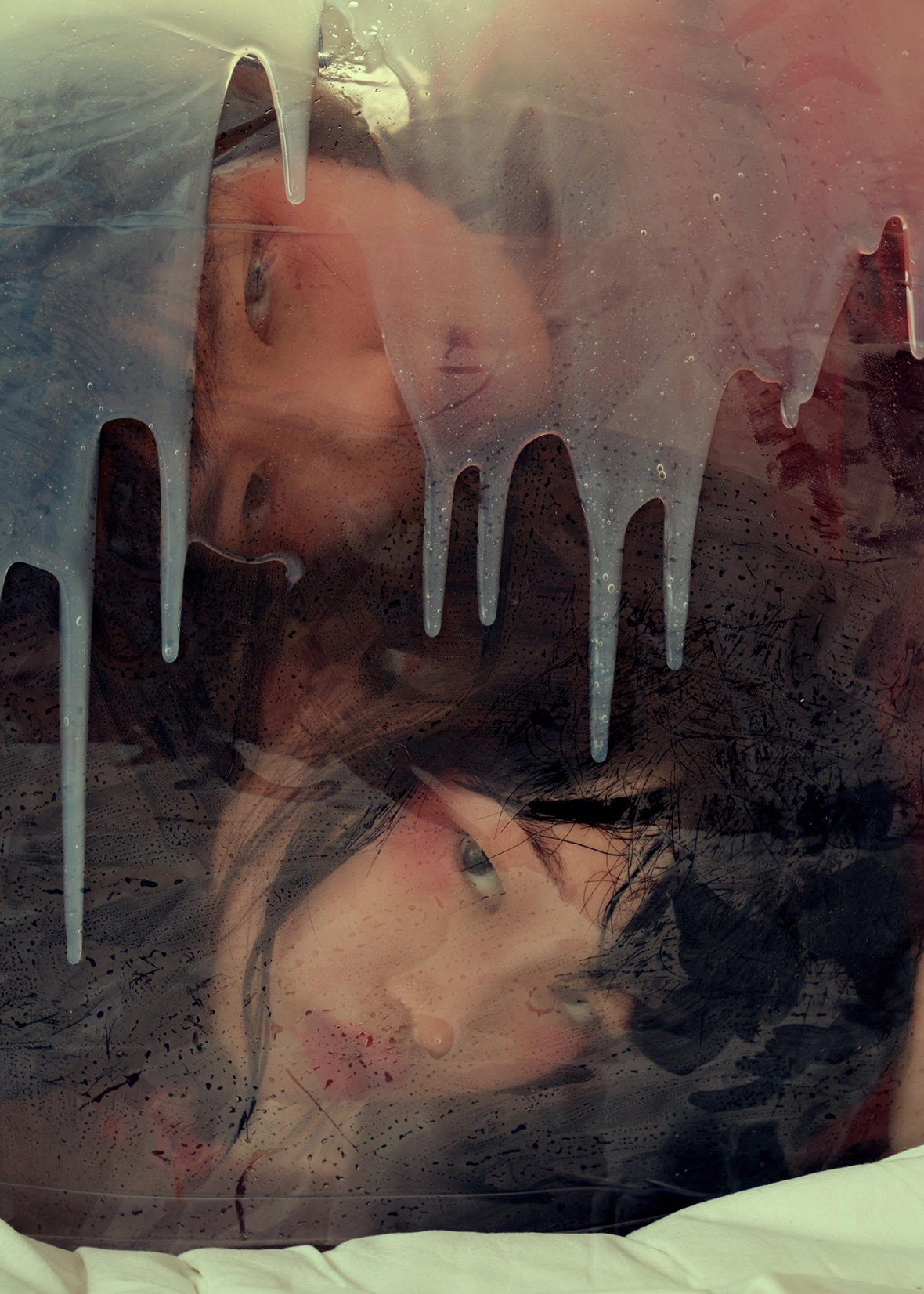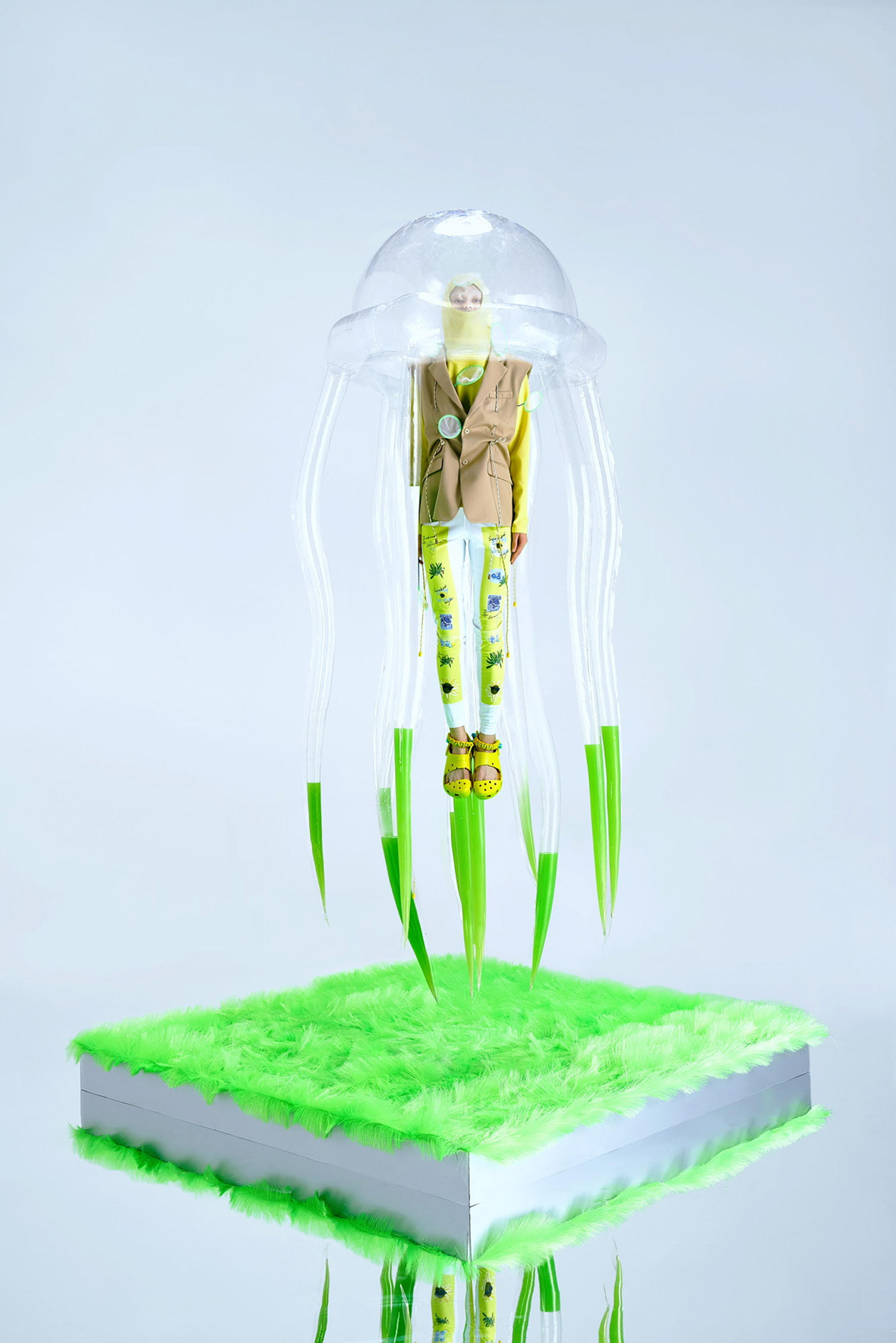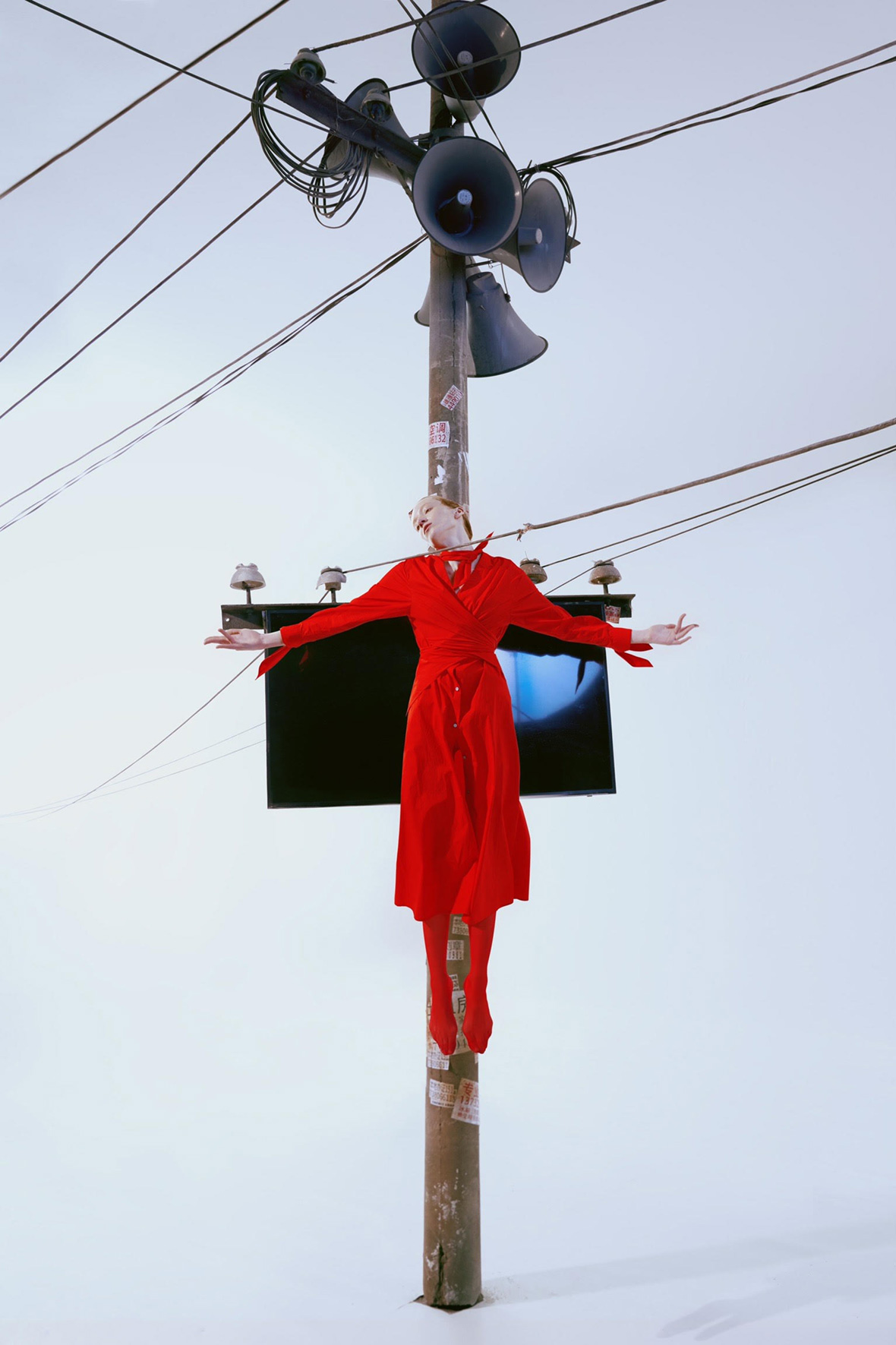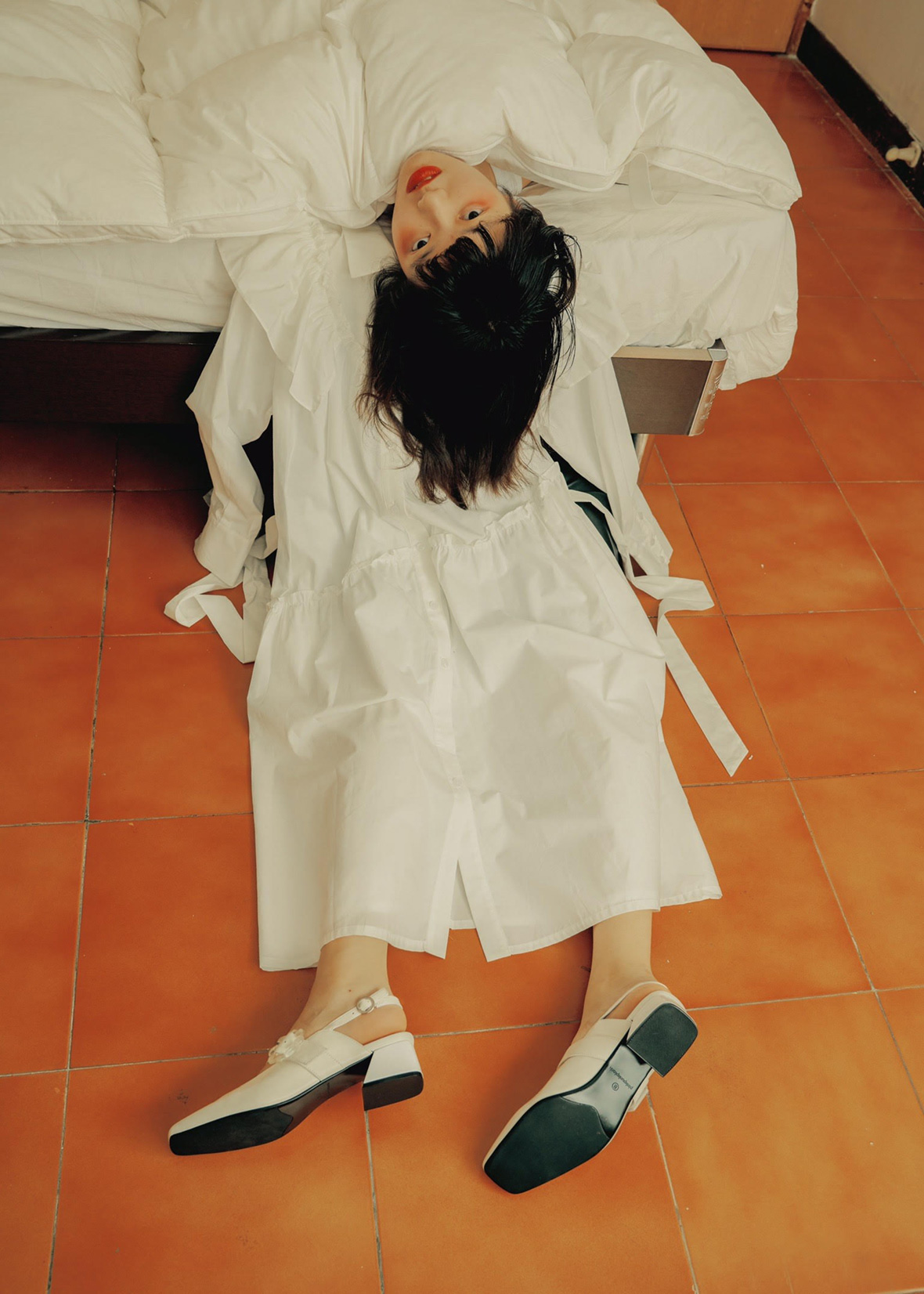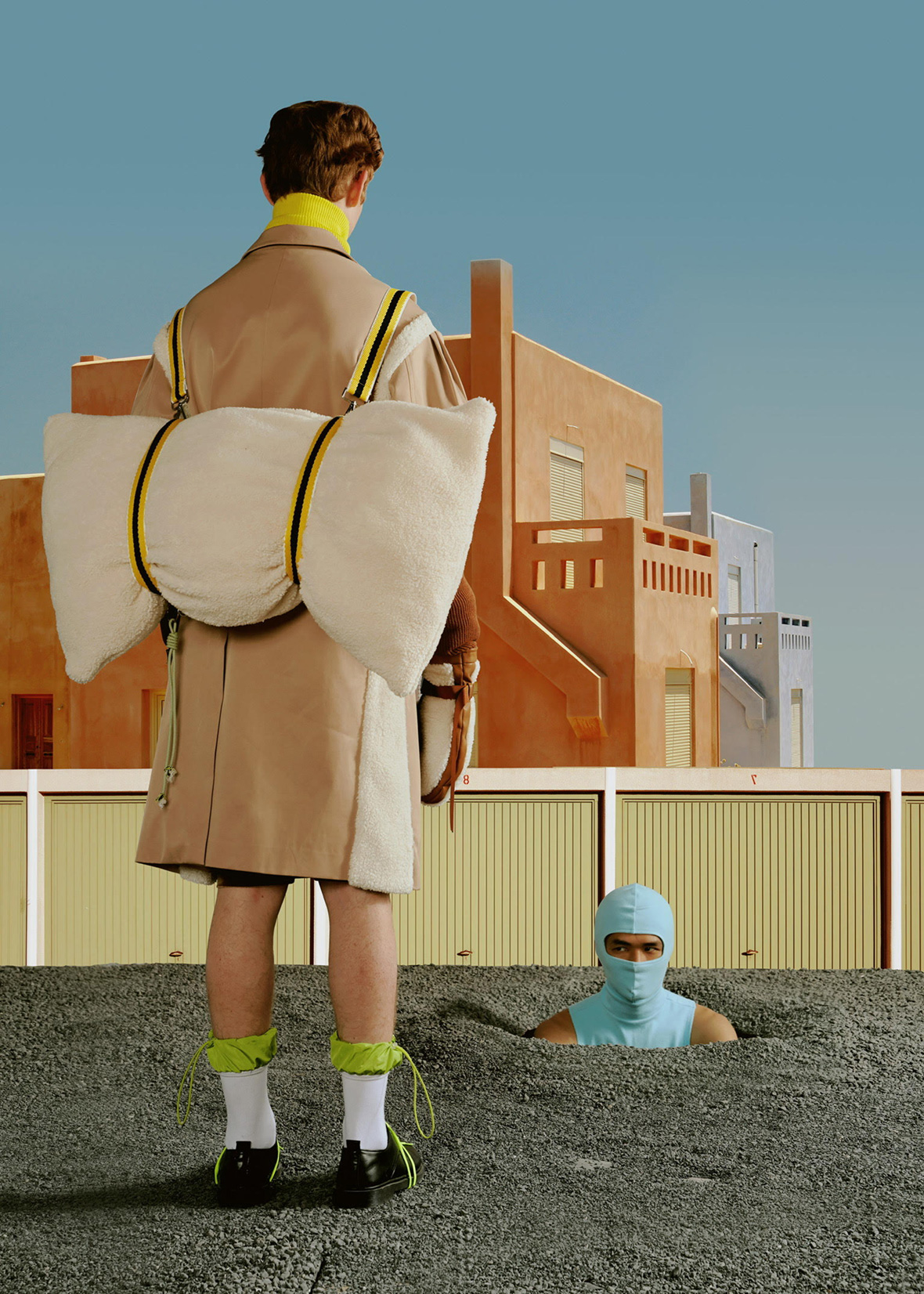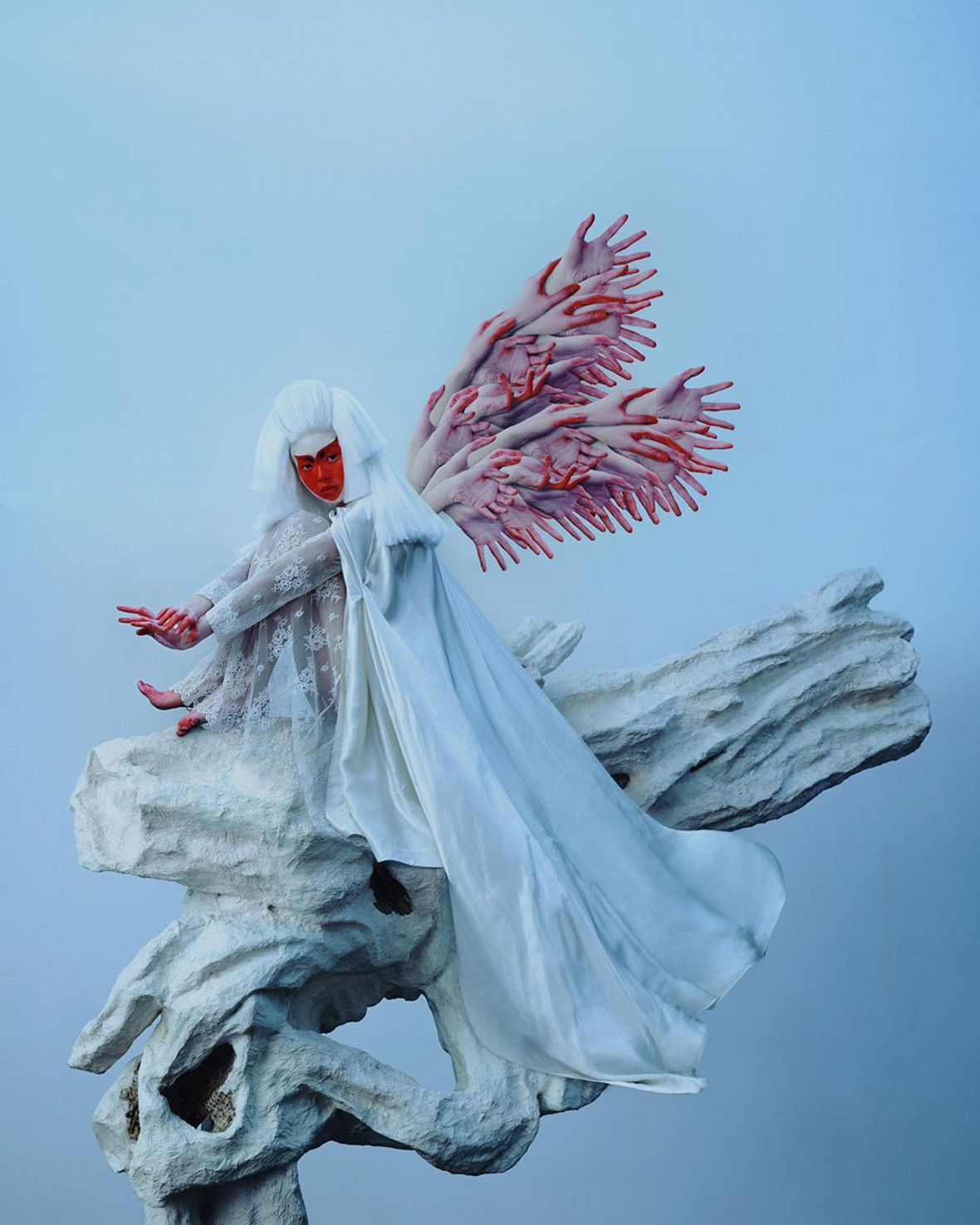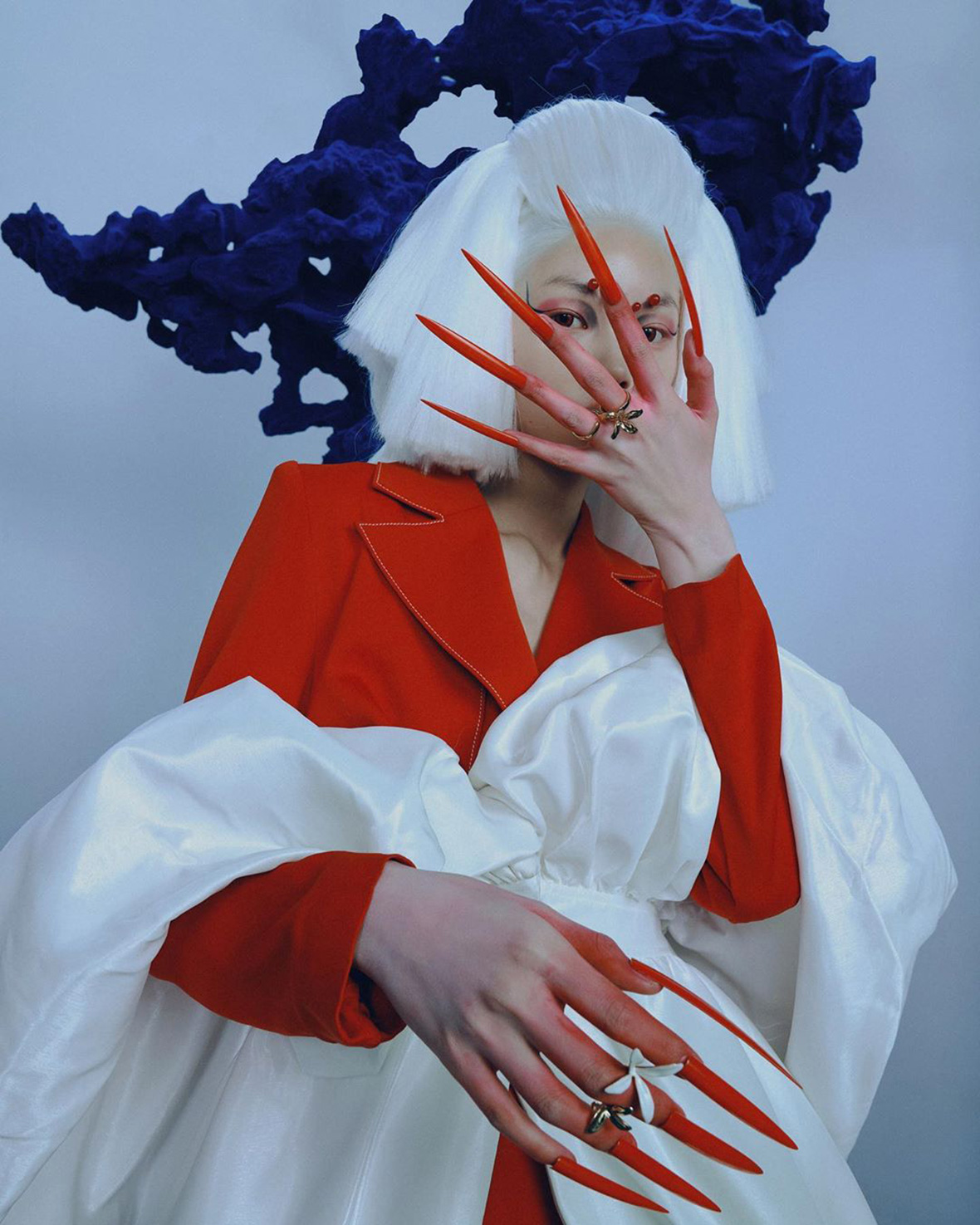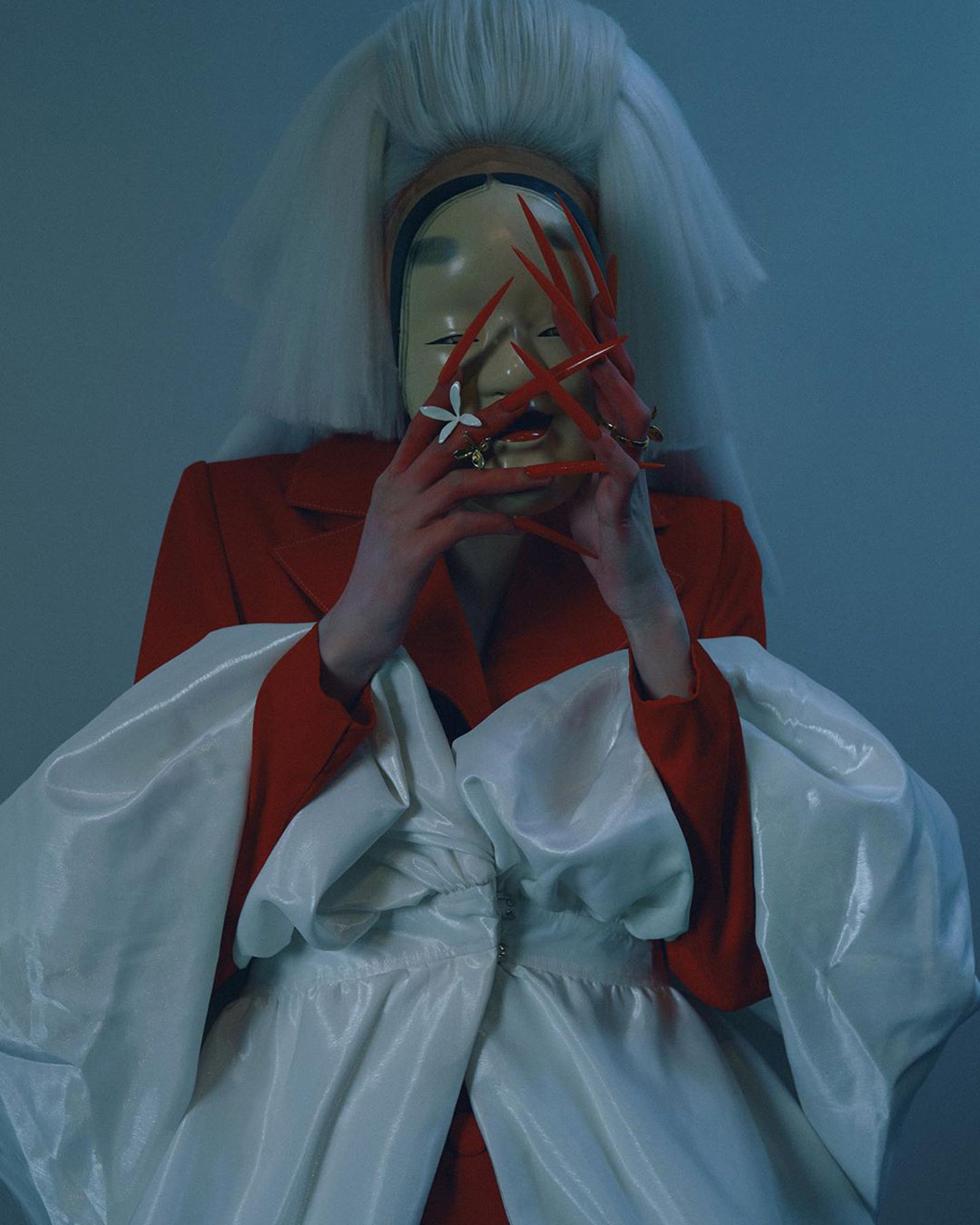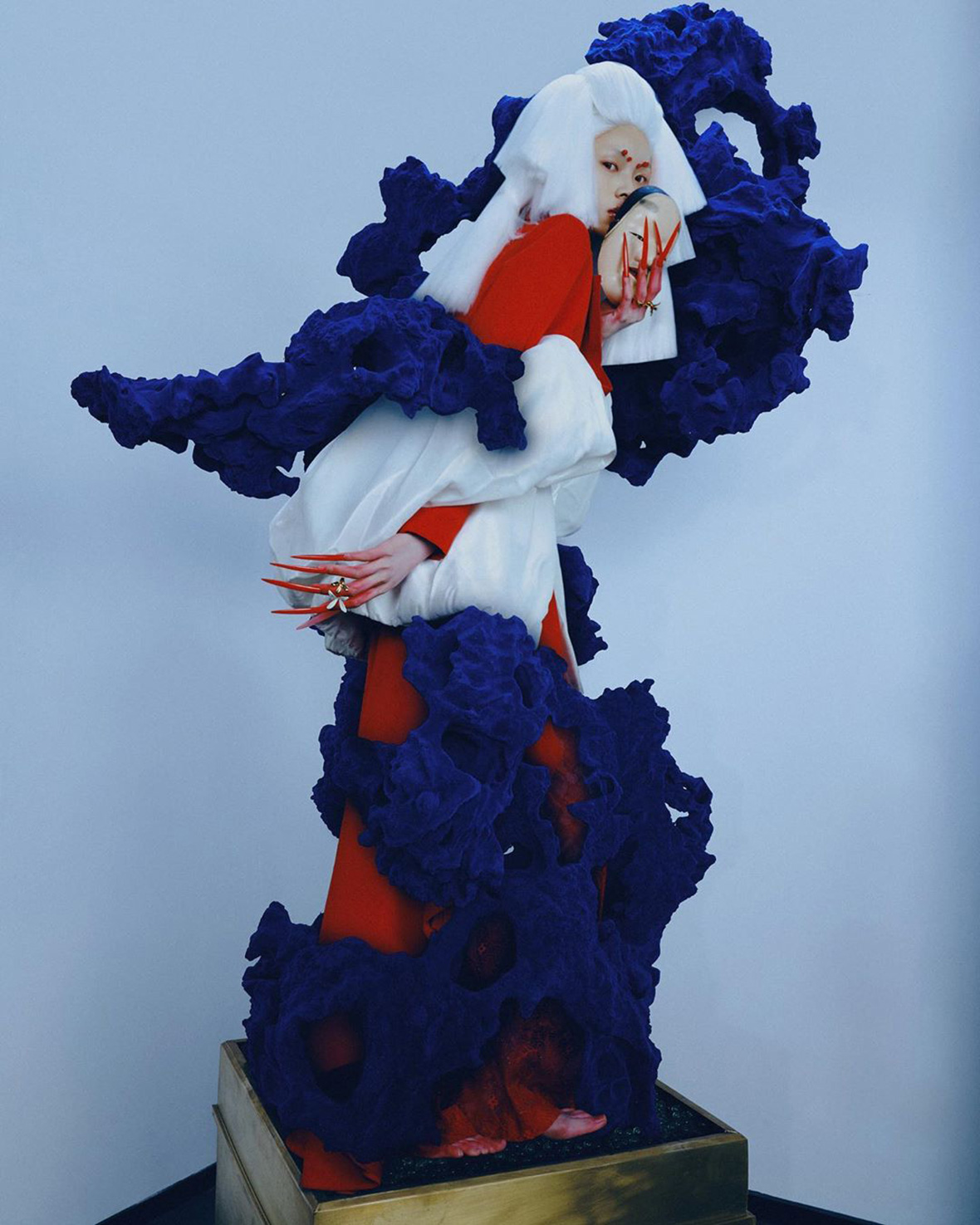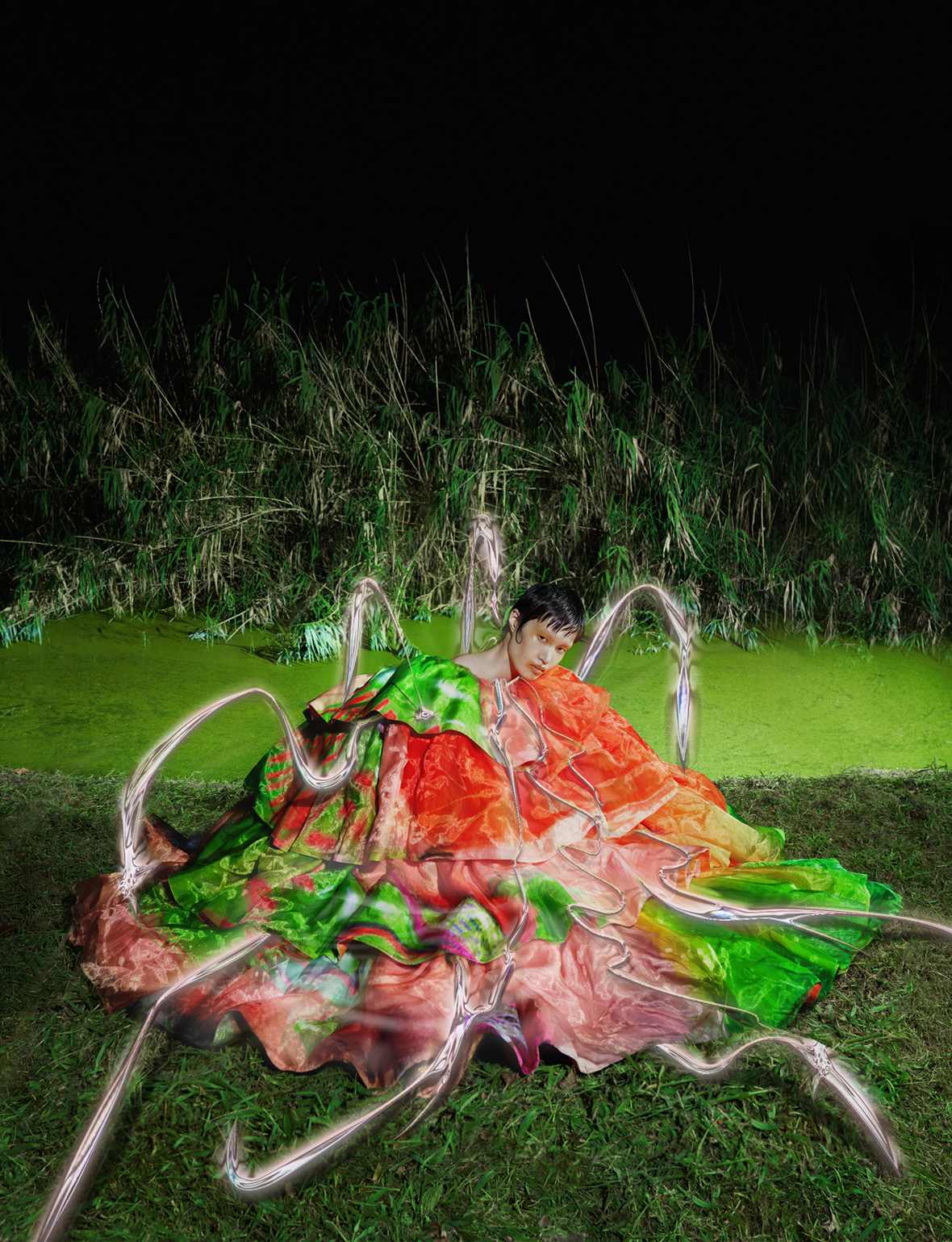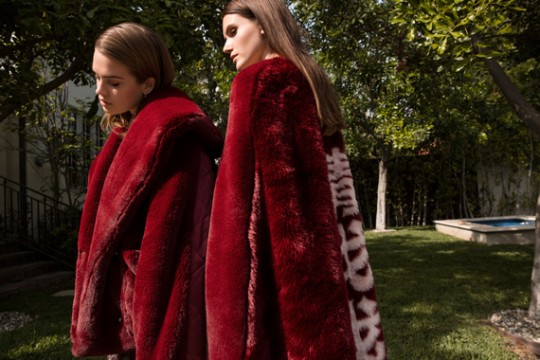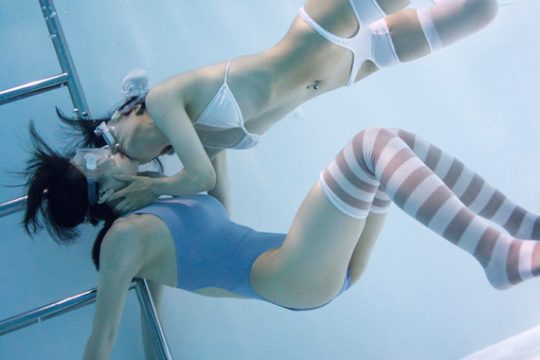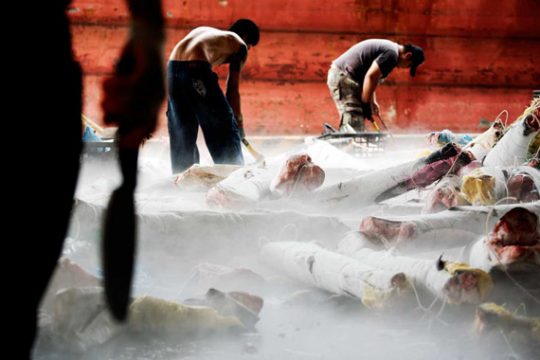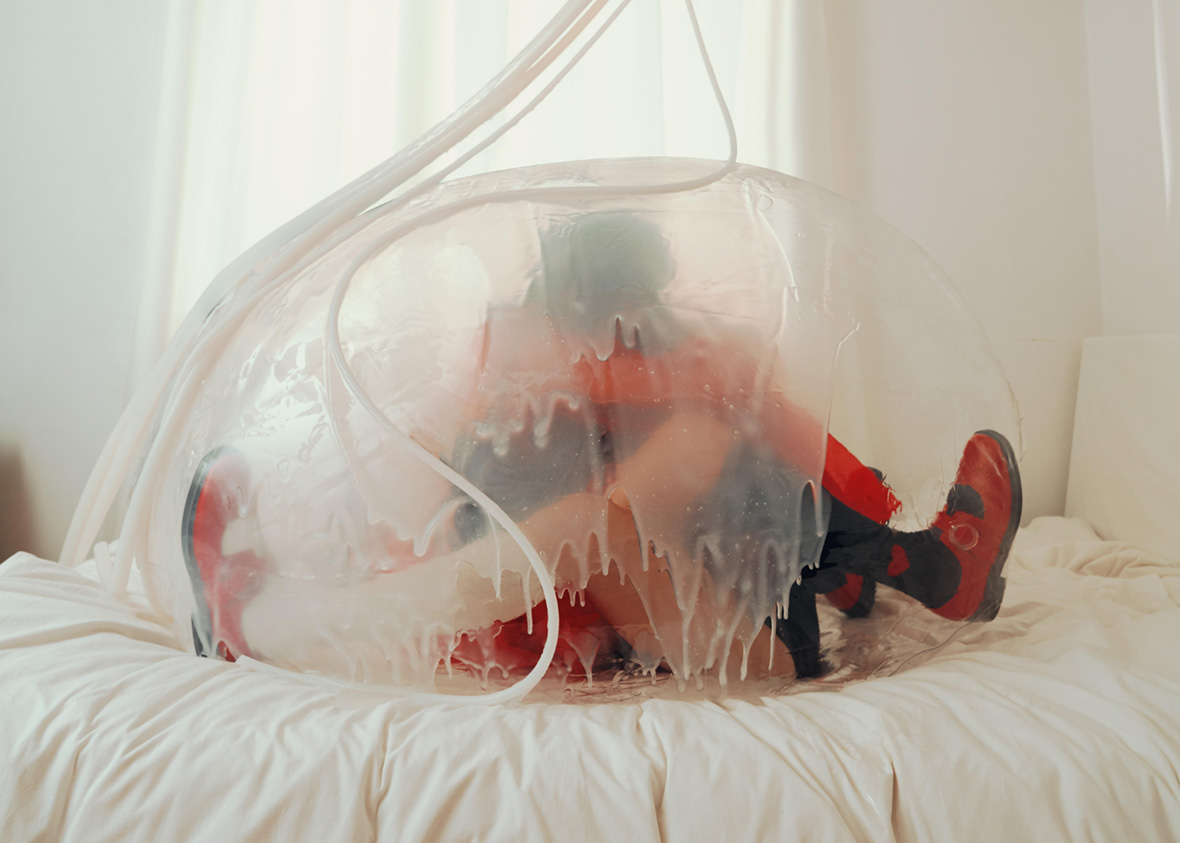
Fashion editorials often strive to escape the bounds of reality to pursue a vision of pure fantasy. Photography, though central, is simply one tool among many. The worlds gleefully built by photographer Wei Huan abound with humanoid characters inhabiting blinding, colorful alien landscapes. Models pose in dystopian wastelands or sit in pools of industrial waste as tire fires burn in the background. Others curl up in a warm bedroom, encased in a creamy, dripping bubble.
杂志时尚摄影往往渴望摆脱现实的束缚,并尝试着追寻一种纯粹的幻想境地。摄影本身固然很重要,但也只是众多媒介中的一种。在韋欢的作品中,模特打扮成类人形的角色,置身于炫目多彩的异域世界。模特在反乌托邦式的荒原中摆出各种姿势,或是坐在疮痍满目的工业废墟之中,任凭身后轮胎上的火焰熊熊燃烧。而在另一些作品中,人物蜷缩在温暖的卧室,被乳白色的水滴状泡沫包裹着。
“The role of photography in fashion editorials,” says Wei, who lives in Guangzhou, “is to stand out like the most beautifully dressed person in the crowd, to quickly attract people’s attention.” To achieve that aim, she dispenses with the rules of any single genre. “I don’t really care if my work is classified as photography. The camera is just a medium, not the ultimate goal.”
现居广州的韋欢说:“摄影在时尚杂志中的角色,就好比人群中装扮最华丽的那一个,这样才能一下子抓住别人的眼球。”为此,她拒绝服从单一的创作风格,“我不在乎我的作品是否被视为摄影作品。相机对我来说只是一种媒介,而不是最终的目的。”

Wei started out studying graphic design but switched to photography, which she found more interesting. Working as a creative director after college, she honed her personal style and accumulated enough knowledge of photography and fashion to realize her visions.
“I don’t need to depend on anybody else to bring my ideas to life. No one knows better what the picture in my mind is than I do,” Wei says. She creates the core vision for each project, yet she still works with a team of trusted and valued collaborators. “A fixed team knows much more clearly what the other person wants, saving a lot of communication costs.”
韋欢最初学习的专业是平面设计,学习途中她发现拍摄更有意思,于是转投摄影领域。大学毕业后,韋欢有过一段担任创意总监的经历,期间她积累了丰富的摄影和时尚经验,磨练并掌握了自己独有的风格,打造出个人的创意理念。
她说:“我不需要依靠其他人实现我的想法。没有人比我更清楚我自己脑海中的图景。”每个项目她都亲自构建主视角,但同时,她依然与一群值得信赖的团队和宝藏合作人共同完成项目。“固定的团队会更清楚对方想要什么,这样可以节省大量的沟通成本。”
In post-production is where Wei’s team often dials up the surrealism, digitally adding tentacles or reptilian appendages to her models. But she’s begun moving away from software-assisted image manipulation. In recent years, she increasingly works with stage designers and makeup artists to physically bring these dreamlike elements to life.
在后期制作的环节中,韋欢的团队通常会为作品的画面增添超现实主义元素,通过电脑技术给照片中的模特画上触手或爬行动物的四肢等等。除了通过软件的图像处理外,韋欢近期开始与舞台设计师和化妆师合作,那些虚拟的科幻元素马上会成为现实。
Wei enjoys working on fashion editorials because they allow for radical creativity. “I like the constant creativity in fashion,” she says. Still, there are strings behind that funding. “It’s a service, and you work for a client.”
正是因为那些时尚机构不加掩饰的包容心,韋欢十分享受为杂志拍摄的过程。她说:“时尚行业里源源不断的创意令我入迷。” 不过,这种创作背后也有着一定的限制,“毕竟这是一项服务,你终究还是要为客户着想的。”
Like our stories? Follow us on Facebook and Instagram.
Instagram: @reihuannn
Contributor: Mike Steyels
Chinese Translation: Olivia Li


